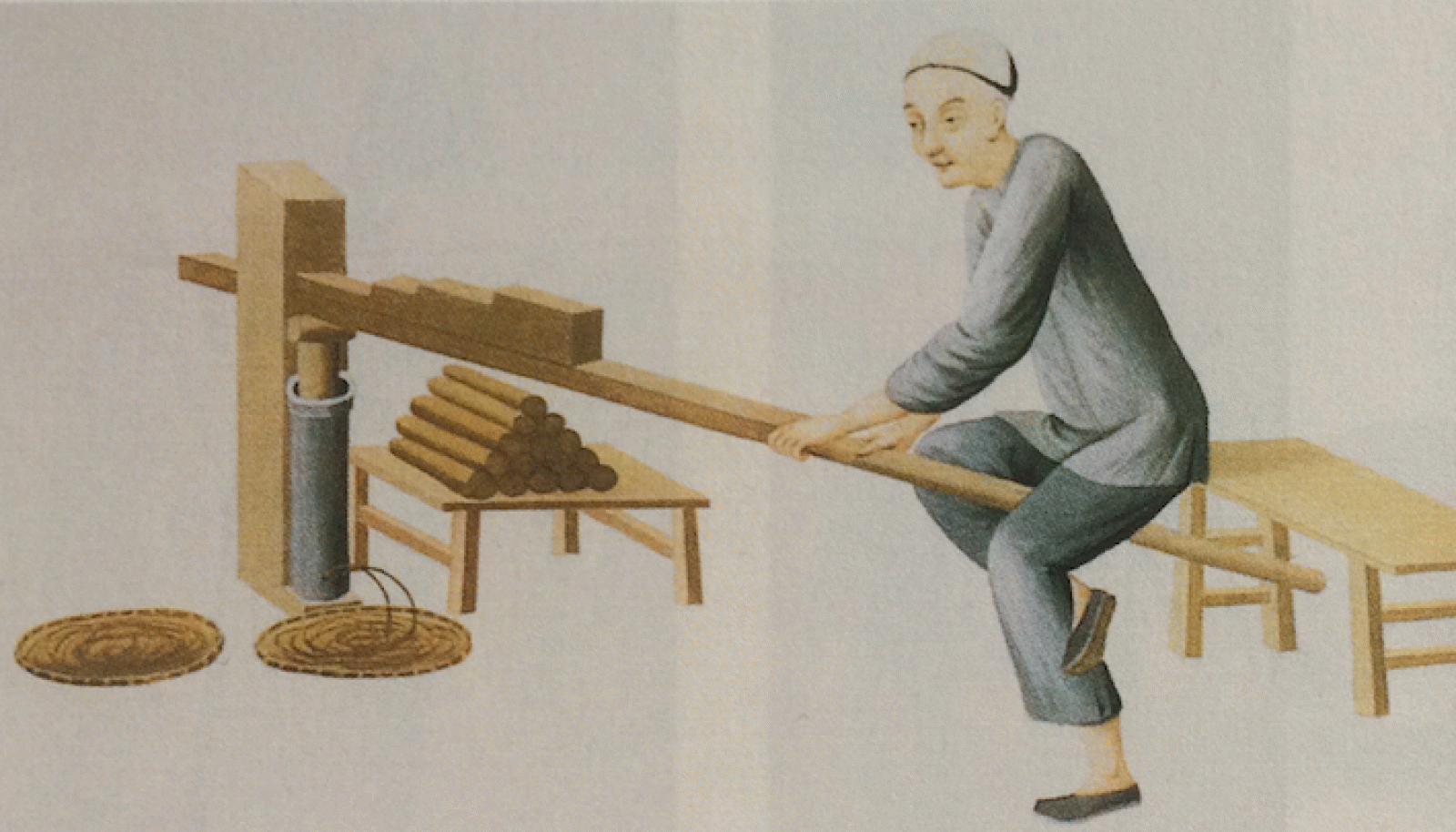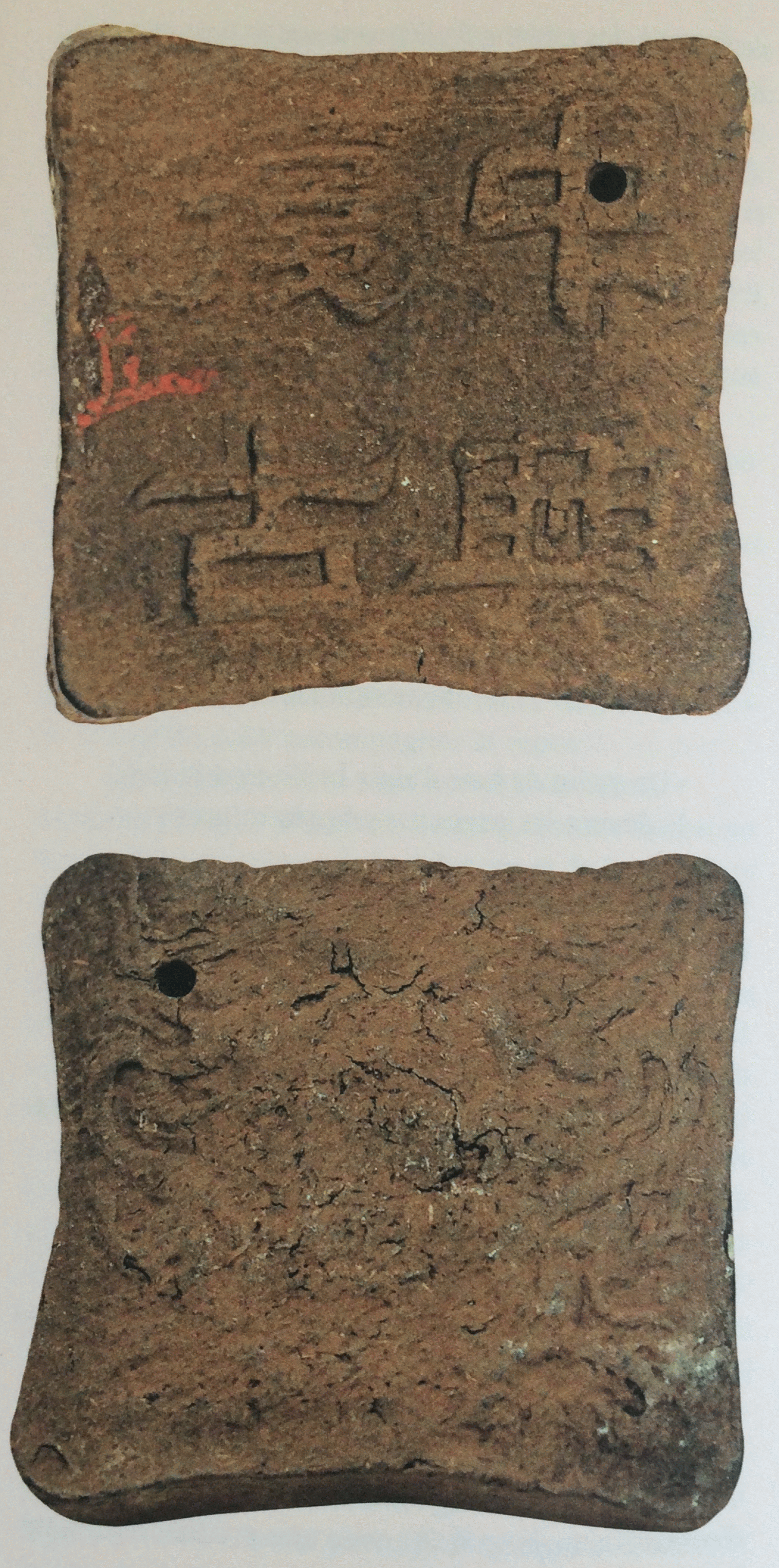4A Lab Seminar
Ning Yao: The Poetics of Incense: Making, Becoming, and Experiencing

Pugua 蒲呱 (active 19th century). Extruding the Jade Incense 榨玉香. format unknown. In: Teng Jun 滕軍 and Li Xiang 李響. Zhongguo xiangwenhuan jianshi 中國香文化簡史 (A Brief History of Chinese Incense Culture). Shangwu yinshuguan, 2021: 260.
According to Gottfried Semper’s (1803–1879) concept of Kunstwerden (“becoming of art”), artworks are shaped by materials, tools, and human creativity and intellect. Materials as well as the “raw physicality of the material characters” (Tim Ingold, 2013, 27) have scientific properties that not only are measurable but also are agentive and meaningful (Bruno Latour and John Law). Taking James Gibson’s theory of affordance as the starting point, Ning Yao explores how incense is a meaningful component in the processes of making, becoming, and experiencing. She discusses how natural raw aromatics or wood are blended and transformed into powder incense, incense paste, and incense sticks (the process of making), as well as incense smoke and incense ash (the process of becoming).
With an emphasis on the centrality of experience, this talk embraces a phenomenological approach that takes into account the interconnectivity of body, human sensations, performances, and environment. By investigating incense, it reveals nuanced material perceptions and cultural associations in the making and using of incense burners, while shedding new light on some key methodological questions such as: What do materials do and achieve? How does materiality facilitate knowledge and artistic ideas?
Ning Yao (Ph.D. East Asian Art History, 2013, Heidelberg University) is a Research Associate in the department of Prof. Gerhard Wolf at the KHI. Her research focuses on the transmission, appropriation and creation of Chinese incense burners ("Bilderfahrzeuge. Aby Warburg's Legacy and the Future of Iconology"). Before joining the KHI, she was a Postdoctoral Fellow in the CAHIM – Connecting Art Histories in the Museum programme (2016–2018); within that frame, she also worked as a curatorial and project assistant for the exhibition “Faces of China: Portrait Painting of the Ming and Qing Dynasties (1368–1912)” in Berlin.

Incense cake, Southern Song period (1126–1279), 4.5 x 4.5 cm; Changzhou Museum, China.
06 December 2021
The event takes place online. Please register by sending an email to 4a_lab@khi.fi.it
Notice
This event will be documented photographically and/or recorded on video. Please let us know if you do not agree with the Kunsthistorisches Institut in Florenz using images in which you might be recognizable for event documentation and public relation purposes (e.g. social media).


